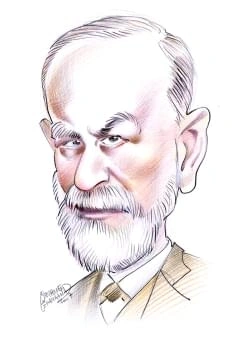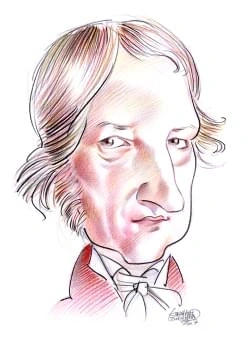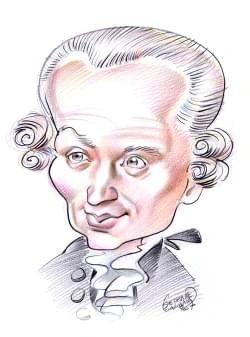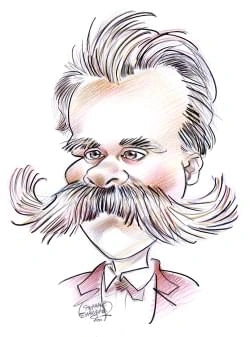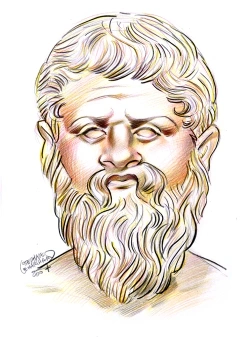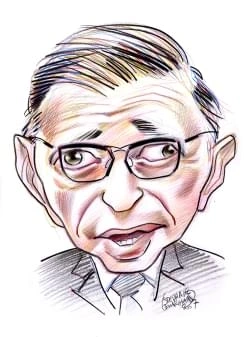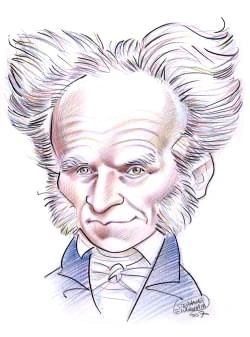270 résultats pour "ancient"
-
Assyria - history.
Assyrian ReliefThis Assyrian relief, made of alabaster, was found at the palace of Assyrian king Sargon II at Khorsabad (now in Iraq). It depictstimber from valuable cedars of Lebanon being shipped by sea. More than 2,500 years old, the sculpture is now in the Louvre in Paris,France.Giraudon/Art Resource, NY Assyrian culture resembled that of Babylonia in most respects. Except for the royal annals, for example, Assyrian literature was practically identical with its Babyloniancounterpart, and the...
-
Portraiture
I
INTRODUCTION
Portraiture, visual representation of individual people, distinguished by references to the subject's character, social position, wealth, or profession.
CaracallaCaracalla is a Roman portrait bust in marble of the emperor Marcus Aurelius Antoninus, probably done circa ad 215. Theson of Septimius Severus, Caracalla (as he was known) was a brutal man whose qualities come through in this piece withits dramatic realism. The bust, which is now in the Louvre, Paris, evidently served as the inspiration for Michelangelo’sbust of Brutus more than one thousand years later.Bridgeman Art Library, London/New York The first representations of identifiable ind...
-
Iranian Art and Architecture
I
INTRODUCTION
Iranian Art and Architecture, the visual arts of Iran.
The first great development of ancient Persian architecture took place under the Achaemenid dynasty during the Persian Empire, from about 550 to 330 BC. Remains of Achaemenian architecture are numerous, the earliest being ruins at Pasargadae, the capital city of Cyrus the Great. These ruins include two palaces, a sacred precinct, acitadel, a tower, and the tomb of Cyrus. The palaces were set in walled gardens and contained central columnar halls, the largest of which was 37 m (111 ft) in length...
-
Roman Art and Architecture - History.
Racecourses or circuses were also built in many cities for holding chariot races and horse races. Rome’s circus-shaped Piazza Navona occupies the site of one that wasbuilt during the reign ( AD 81-96) of the emperor Domitian. The largest circus in Rome, the Circus Maximus, held about 200,000 spectators. E Public Baths Large cities and small towns alike also had public baths ( thermae ); under the Republic they were generally made up of a suite of dressing rooms and bathing chambers with hot- ,...
-
Paris (city, France) - geography.
Théâtre Musical de Paris and the Théâtre de la Ville. Just north of the Hôtel de Ville is the Pompidou Center, also known as Beaubourg, an arts complex devoted to modern and contemporary art and design. The structure,in steel and glass and featuring brightly colored, exposed pipes and ducts, is the work of Italian architect Renzo Piano and British architect Richard Rogers. Itscontroversial pop-art design contrasts sharply with the overall gray hue of the city, and was criticized by many followin...
-
Rome (Italy) - geography.
country’s best, and in the summer at the Baths of Caracalla. The city also has some 20 theaters and 6 major concert halls, which offer a varied repertory during the fall,winter, and spring. The museums of the city deal with all aspects of the arts and sciences and are among the world’s finest. The oldest art collection in Rome, housed in the CapitolineMuseum, was established in 1471 and contains exceptional antiquities. Among other Roman museums are the National Museum of the Villa Giulia, which...
-
Roman Mythology.
Her temple on the Aventine Hill in Rome was a center for organizations of skilled craftspeople. According to tradition, in 509 BC the dynasty of Etruscan kings ended and the Roman Republic was founded. The republic was ruled by two chief magistrates, called consuls, who were elected by the people to one-year terms. During the time of the republic, the Capitoline temple became the most important public shrine of theRoman people and the focus of public worship. Each January, the new consuls offer...
-
Judaism.
is learned or memorized”), the earliest document of rabbinic literature, edited in Palestine at the turn of the 3rd century. Subsequent rabbinic study of the Mishnah inPalestine and Babylonia generated two Talmuds (“that which is studied”; also called Gemera, an Aramaic term with the same meaning; see Talmud), wide-ranging commentaries on the Mishnah. The Babylonian Talmud, edited about the 6th century, became the foundation document of rabbinic Judaism. Early rabbinic writings also include exe...
-
-
Anthropology.
humans, such as tools, pottery, and buildings) and human fossils (preserved bones). They also examine past environments to understand how natural forces, such as climate and available food, shaped the development of human culture. Some archaeologists study cultures that existed before the development of writing, a time knownas prehistory . The archaeological study of periods of human evolution up to the first development of agriculture, about 10,000 years ago, is also called paleoanthropology....
-
Iran - country.
Zagros mountains. In the more arid central part of the country, wild pistachio and other drought-resistant trees grow in areas that have not been disturbed by humanactivity. Tamarisk and other salt-tolerant bushes grow along the margins of the Dasht-e Kavir. A wide variety of native mammals, reptiles, birds, and insects inhabit Iran. Many species of mammals—including wolves, foxes, bears, mountain goats, red mountainsheep, rabbits, and gerbils—continue to thrive. Others—including Caspian tigers,...
-
Roma Roman A legendary figure who came to be
worshiped as a goddess, Roma was the personification
of the city of Rome.
became Rome. The first hill people settled appears to have been the Capitoline Hill. Archaeologists have discovered some of the oldest temples to the supreme Roman god, Jupiter, on this hill. According to legend, it was on this hill that Romulus founded his city. The next hill that settlers developed was the nearby Palatine, 1,250 yards to the southeast of the Capitoline Hill. Legend says that Evander, a leader from the Arcadia region of ancient Greece, settled this hill even before Romulus was...
-
Acropolis - geography.
The Erechtheum is one of the most elaborate buildings on the Acropolis. Its plan is irregular, probably because of the sloping site and the need to preserve earlier placesof worship on the site or nearby. Porches project from three sides of the Erechtheum, but they are at different heights and are not centered on each side. GracefulIonic columns support the porches on the eastern and northern sides. Elegant caryatids (columns carved in the shape of draped female figures) support the Porch of t...
-
Acropolis - USA History.
The Erechtheum is one of the most elaborate buildings on the Acropolis. Its plan is irregular, probably because of the sloping site and the need to preserve earlier placesof worship on the site or nearby. Porches project from three sides of the Erechtheum, but they are at different heights and are not centered on each side. GracefulIonic columns support the porches on the eastern and northern sides. Elegant caryatids (columns carved in the shape of draped female figures) support the Porch of t...
-
Heracles (Herakles; Glory of Hera) Greek The
greatest hero of Greek mythology, he was called
Hercules by the Romans.
Amphitryon’s cattle. Heracles killed the lion and ever after wore its pelt (though some say that the pelt worn by Heracles was that of the Nemean lion; see The Twelve Labors of Heracles , right). Heracles then did battle with Erginus, King of Orchomenos, who attacked Thebes. Amphitryon died in this struggle. The victorious Heracles became the idol of Thebes. Creon, the new king of Thebes, gave his daughter Megara (2) to Heracles in marriage. The marriage was not a happy one, and in later years,...
-
Assyria - USA History.
villages and cities were ransacked and razed, but no attempt was made to annex their territories. In the course of time this pattern of conquest changed, and the Assyrian rulers began to make Assyria the center of a new empire by incorporating the conquered landsinto their domain, although probably not according to a conscious plan. Toward the end of the 10th century BC, for example, Adad-nirari II annexed the Aramaean state centering on Nisibis, east of the Habur River. His son, Tukulti-Ninurt...
-
Renaissance Art and Architecture
I
INTRODUCTION
Renaissance Composition
During the Renaissance (15th and 16th centuries) artists discovered new ways to help them create more realistic and
compelling images.
with reliefs, had been familiar for centuries. A Early Renaissance Sculpture Ghiberti’s Gates of ParadiseThe Gates of Paradise are bronze doors created by Italian Renaissance sculptor Lorenzo Ghiberti between 1425 and 1452for the east entrance to the baptistery of the Florence Cathedral in Italy. This detail, showing Isaac and Esau, is from oneof the doors' ten panels, each of which illustrates a story from the Bible. Ghiberti endowed the scenes with volume, depth,and movement, and helped initi...
-
-
Japanese Literature
I
INTRODUCTION
Japanese Literature, literature of Japan, in written form from at least the 8th century
AD
to the present.
The Man’yō’sh ū contains about 4,500 poems, most of them composed in the Nara period (710-784). Some of the poems are far older, however, and some of the verses date to earlier collections that have not survived. The work demonstrates a gradual change from basic verses on simple subjects to more sophisticated expressions with a broad range of subject matter. This text also shows the development of poetic forms such as the tanka (short poem), a form structured around alternating lines of 5 an...
-
Maya Civilization - history.
III CLASSIC PERIOD Maya Ruins, El SalvadorThe Maya occupied a large part of Central America, and their civilization reached its height between ad 300 and 900. Many ruins ofthe ancient civilization have been excavated in El Salvador, including huge limestone pyramids.Susan McCartney/Photo Researchers, Inc. Classic Maya civilization became more complex in about AD 300 as the population increased and centers in the highlands and the lowlands engaged in both cooperation and competition with each o...
-
Japanese Music
I
INTRODUCTION
Shamisen Performance
The shamisen is a Japanese instrument with three strings.
utilizes six modes, or scales, of Chinese origin, all derived from two basic pentatonic (five-note) scales: ryo, D E-flat G A B-flat, plus F and C as auxiliary pitches; and ritsu, D F G A C, plus auxiliary pitches E-flat and B-flat. The meters in gagaku music are basically duple (in twos). IV DRAMATIC MUSIC Classical Nō Drama of JapanInspired both spiritually and artistically by Zen Buddhism, the Japanese n ō theater is composed of four main components:music (voices, instruments), choreogra...
-
Byzantine Empire .
Emperor Alexius I, founder of the Comnenian dynasty, nevertheless appealed to the pope for aid against the Turks. Western Europe responded with the First Crusade(1096-99). Although Byzantium initially benefited from the Crusades, recovering some land in Asia Minor, in the long run they hastened the empire's decline. Italian merchant citieswon special trading privileges in Byzantine territory and gained control of much of the empire's commerce and wealth. The Byzantines experienced a superficialp...
-
Indian Art and Architecture
I
INTRODUCTION
Art on the Indian Subcontinent
This map highlights places in India and Pakistan where prominent examples of Indian art and architecture have been
produced.
Sun Temple of KonarakThis 13th-century relief depicting a wheel of the chariot of Indian sun god Surya is situated in the Konarak temple. Thetemple, dedicated to Surya, is situated at Puri in the Gulf of Bengal.Keren Su/Corbis The arts of India expressed in architecture, sculpture, painting, jewelry, pottery, metalwork, and textiles, were spread throughout the Far East with the diffusion ofBuddhism and Hinduism and exercised a strong influence on the arts of China, Japan, Myanmar (formerly known...
-
Indian Literature
I
INTRODUCTION
Arundhati Roy's The God of Small Things
Indian author Arundhati Roy poses with a copy of her acclaimed first novel, The God of Small Things (1997).
Mathura BuddhaMany of the earliest texts of Indian literature were religious writings of Buddhism. This Buddha figure carved out ofsandstone is from Mathura, a city in northern India that was at the center of Buddhist sculptural activity from the 2ndcentury bc to the 6th century ad.Angelo Hornak/Corbis The sacred Vedas were composed in Old Sanskrit by Aryan poet-seers between about 1500 BC and about 1000 BC. The Vedas are compilations of two major literary forms: hymns of praise to nature deit...
-
Confucian philosophy, Korean
neglected by more traditional Confucianism. Read with new eyes, an entirely new level of meaning was uncovered in the ancient texts: they discovered a Confucian foundation for the meditative cultivation of consciousness that had been a particular strength of the Buddhists, and to frame it and provide an account of sagehood equal to Buddhist talk of enlightenment, they found a complete metaphysical system, a Confucian version of the kind of thinking that had been elaborated mainly under Daoist au...
-
Ecuador - country.
F Natural Resources Ecuador’s main mineral wealth is in petroleum. Other mineral resources of the country include gold, silver, copper, lead, and zinc. Forests cover 38.3 percent of thecountry. G Plants and Animals Along the northern part of the Ecuador coast, and within the inner portion of the southern coast, tropical jungles abound. In some places the jungles extend up theslopes of the Andes as wet, mossy forests. Dense forests cover both flanks of the Cordilleras, as well as the Oriente, u...
-
-
Africa.
The highest elevations in Africa are found in the various ranges of East Africa. After Kilimanjaro, the next highest peaks are Mount Kenya (5,199 m/17,057 ft), north ofKilimanjaro in central Kenya; Margherita Peak (5,109 m/ 16,762 ft) in the Ruwenzori Range on the border between Uganda and the Democratic Republic of the Congo(DRC); Ras Dashen (4,620 m/ 15,157 ft) in the Ethiopian Highlands of northern Ethiopia; Mount Meru (4,565 m/ 14,977 ft), close to Kilimanjaro in Tanzania; and MountElgon (4,...
-
Switzerland - country.
formation over higher elevations. The wind reverses direction about sundown and moves down the valley as a cool downdraft. The foehn, which occurs during the wintermonths, is a dry and relatively warm airflow that is drawn northward over the Alps. The foehn can quickly melt snow and ice, increasing the risk of mudslides andavalanches. D Natural Resources Waterpower is the chief natural resource of Switzerland. The principal source of water is runoff from the considerable annual precipitation th...
-
Ireland - country.
F Plants and Animals Ireland’s animal life does not differ markedly from that of England or France. Over many centuries of human settlement almost all of Ireland’s natural woodlands werecleared, and indigenous animals such as bear, wolf, wildcat, beaver, wild cattle, and the giant Irish deer (a type of fallow deer) gradually disappeared. However, thehardy and versatile Connemara pony, Ireland’s only native pony breed, has been used by Irish farmers since prehistoric times. The great auk, or gar...
-
Fiche de lecture sur le chapitre 11: The Greek of the New Testament, par Mark Janse, sur la section IV de l’ouvrage, intitulé: Ancient Greek: structure and change, pages 646-653.
# LG33AM30 européennes # Rapports entre le grec et les autres langues - Vitoria Carolina MORAIS BRAZIL - Nº étudiant: 21917363 - L1 Sciences du langage FICHE DE LECTURE I. Les références obligatoires: 1. Ouvrage: - Édité par: Anastassios-Fivos CHRISTIDIS, Maria ARAPOPOULOU, Maria CHRITI pour Centre for the Greek Language - Année: 2007 - A history of ancient Greek: from beginnings to late antiquity - Cambridge, Royaume-Uni - Cambridge University Press II. Sur le chapitre:...
-
Acropolis - history.
Peloponnesian War, between Athens and an alliance led by Sparta, finally broke out in 431 BC. Sparta’s alliance defeated Athens, and the Propylaea was never completed. Greek Architectural OrdersThe ancient Greeks developed three major architectural styles, or orders, that determined the major features of a temple facade. TheDoric is the oldest and simplest order. The Ionic and Corinthian orders added a base to the column and developed a more elaboratescheme for the column’s capital. The entabl...
-
underworld (1) Greek The black abyss known
as Hades and the dwelling place of the dead.
Earth. By the middle of the third century b.c., Dis Pater and Proserpina had also become the rulers of the realm of dead spirits. Together they became an official part of the Roman religious ceremonies. Beginning in 249 b.c., Romans held games known as the Ludi Tarentini or Tarentine Games, to recognize, honor, and appease these two gods. Much of the mythology of Dis Pater and Proserpina had by this time taken on the stories of the Greek gods Hades (or Pluto) and Persephone, who ruled over a rea...
-
Demeter - Mythology.
disguised herself as an old woman, wearing a hood. The king’s wife, Metaneira, welcomed Demeter and asked her to look after her newborn son, Demophon. Demeter nourished the infant on ambrosia (food of the gods) and each night placed him in the fire in order to destroy all that was mortal in him, so that he would grow up like a god. One night, Metaneira spied upon her nurse and saw her place the child in the fire. Metaneira screamed with terror. Demeter was angry at the intrusion. Demete...
-
Pyramids (Egypt) - geography.
displayed in its full majesty. B Interior The interior of the Great Pyramid is complex, with a series of passages leading to several rooms. The most important room is the King’s Chamber, the room in which Khufu’sbody was placed during his funeral. In this room the priests left items that Khufu, like all Egyptians, would need for the afterlife. Although the builders tried to blockpassages and doors when they left the pyramid after the king’s funeral, tomb robbers did eventually take everything o...
-
-
Atheism.
with the philosophical ideas of materialism, which holds that only matter exists; communism, which asserts that religion impedes human progress; and rationalism,which emphasizes analytic reasoning over other sources of knowledge. However, there is no necessary connection between atheism and these positions. Some atheistshave opposed communism and some have rejected materialism. Although nearly all contemporary materialists are atheists, the ancient Greek materialist Epicurusbelieved the gods wer...
-
Trojan War - Mythology.
Agamemnon stole Briseis away from Achilles. Furious, Achilles withdrew from the war, causing a serious setback to the Greeks. The quarrel between Achilles and Agamemnon was one of the starting points of the events of the latter part of the Trojan War described by Homer in the Iliad. Later, Achilles would rejoin the war and help bring the Greeks to victory, this time under the leadership of his dear friend Patroclus. Hector killed Patroclus. Achilles then slew Hector and dragged his dead body...
-
Andes - geography.
smaller trees lies above the zone of rain forest. Among the smaller trees is found the wild cinchona, a source of quinine, a drug used to treat malaria. In the southernAndes, broadleaf and coniferous trees cover the lower slopes. Coniferous forests are found above 2,000 m (6,500 ft), and the timberline is generally about 3,000 m(about 10,000 ft) above sea level. Above the timberline are treeless highland meadows, but the high plateaus of the central Andes support only a sparse covering ofgrasses...
-
1984, Tutmosis III.
Baudouin VANDEWALLE 1976, «La découverte d'Amarnaetd'Akhenaton »,RdE 28,7-24. 1979, «Les textes d'Amarna seréfèrent-ils àune doctrine morale?», OBO 28,353-362. Jacques VANDIER 1936, lafamine dansl'Egypte ancienne, IFAO,RAPH 7. 1949, Lareligion égyptienne, coll.«Mana »,P.U.F. 1950, Mo'alla. Latombe d'Ankhtifi etlatombe deSébekhotep, IFAO,BdE18. 1952, Manuel d'archéologie égyptienne,I,Les époques deformation, Lapréhistoire —lestrois premières dynasties, Paris,Picard. 1954, Manuel d'archéologie égy...
-
Calligraphy
I
INTRODUCTION
Japanese Calligraphy
This hanging scroll is an example of Japanese calligraphy.
Section of the Egyptian Book of the DeadThe Egyptian Book of the Dead was a text containing prayers, spells, and hymns, the knowledge of which was to be usedby the dead to guide and protect the soul on the hazardous journey through the afterlife. This section of one such book,dating from the early 19th Dynasty, shows the final judgment of the deceased (in this case Hu-Nefer, the royal scribe)before Osiris, the god of the dead. Hieroglyphs as well as illustrations portray the ritual of weighing t...
-
Chinese Music
I
INTRODUCTION
Classical Peking Opera
Of the many major forms of regional theater in China, Peking opera is by far the most famous.
World Music TourClick on the instruments to hear music from around the world.© Microsoft Corporation. All Rights Reserved. However, the Confucian beliefs about music were constantly eroded throughout Chinese history by a long tradition of popular entertainment music, favored both at thecourt and by the common folk. Although excluded from official ritual performances for several thousand years, Chinese women musicians and entertainers had a centraland formative role in this entertainment music as...
-
Comedy
I
INTRODUCTION
Laurel and Hardy
Stan Laurel, in overalls, and Oliver Hardy, left, formed one of the most popular comedy teams in motion-picture history.
The elements and techniques of comedy are diverse and differ from culture to culture. More than tragedy or serious drama, comic entertainment is controlled by socialconventions that define the boundaries of acceptable humor and topics that are taboo or off-limits for humor. What is considered funny in one place and time may beforbidden culturally or viewed as infantile or in poor taste in another. Virtually every component of human behavior is subject to comic treatment. This includes bodilyfunc...
-
Gymnastics.
harmoniously with the equipment to perform a graceful and error-free routine. There are also two team events in which five competitors perform together. At thehighest international levels, rhythmic gymnastics is judged on a 30-point scale rather than with the traditional 10-point scoring system. IV TRAMPOLINE Trampoline first appeared in the Olympics as a medal sport at the 2000 Games in Sydney, Australia, with a men’s individual event and a women’s individual event.Contestants bounce up and d...
-
-
Dog Family - biology.
muzzles, long and bushy tails, and large ears. Many foxes hunt by stalking prey and then leaping on it with a distinctive, stiff-legged pounce. Once thought to besolitary animals, foxes are now known to live in groups of up to six individuals. The remaining canids are each highly distinctive. Raccoon dogs and bush dogs are the least doglike canids in appearance. Raccoon dogs, found in eastern Asia, havestubby legs, a stout body, short ears, shaggy fur, and a black face mask that resembles a racc...
-
Julius Caesar
I
INTRODUCTION
Julius Caesar (100-44
BC),
Roman general and statesman whose dictatorship was pivotal in Rome's transition from republic to empire.
V CROSSING THE RUBICON In 52 BC, with Crassus out of the way, Pompey was made sole consul. Combined with his other powers, this gave him a formidable position. Jealous of his younger rival, he determined to break Caesar’s power. To achieve this objective, he first needed to deprive Caesar of the forces he commanded in Gaul. Pompey ordered him toreturn to Rome without his troops. To protect himself, Caesar suggested that he and Pompey both lay down their commands simultaneously, but this propos...
-
Julius Caesar.
V CROSSING THE RUBICON In 52 BC, with Crassus out of the way, Pompey was made sole consul. Combined with his other powers, this gave him a formidable position. Jealous of his younger rival, he determined to break Caesar’s power. To achieve this objective, he first needed to deprive Caesar of the forces he commanded in Gaul. Pompey ordered him toreturn to Rome without his troops. To protect himself, Caesar suggested that he and Pompey both lay down their commands simultaneously, but this propos...
-
Camel - biology.
of water in the stomach or hump as was once commonly believed. Unlike other mammals, however, the camel can survive as long as three weeks without drinking,depending on the water content of its food. It can survive a water loss of about 40 percent of its normal body weight. In comparison, a loss of 15 percent is usually fatalfor humans. Camels can go without water due to several unique adaptations to their environment. The camel conserves more water in its body than any other mammal. It excretes...
-
Tuberculosis.
TB has existed for thousands of years. Scars on a skull found in Turkey indicate the presence of the disease 500,000 years ago. Scientists also have found tubercles inmummified bodies from ancient Egypt. References to TB can be found in the writings of ancient Babylonia, Egypt, and China. The term tuberculosis was first used in 1839; it was derived from the Latin word tubercula, meaning small lump, referring to the small scars seen in tissues of infected individuals. TB reappeared in Europe...
-
Confucianism.
IV NEO-CONFUCIANISM After centuries of intellectual and cultural dominance by Buddhism, China began to experience a revival of Confucian thought during the Tang dynasty ( AD 618-907). It was led by poet and essayist Han Yu (Han Yü). Han Yu attacked Buddhism and Daoism, which he believed had kept government officials from seeing how they couldhelp the people. To further public welfare, he urged them to study the way of the ancient sages through the Five Classics . Han Yu almost lost his life f...
-
Giant Panda - biology.
In 2007 conservationists announced that a parasitic roundworm was responsible for a significant number of the panda deaths reported in the wild since 1990. Theparasite Baylisascaris schroederi causes the disease visceral larval migrans, which results in bleeding in the lungs, the liver, and the intestines, and can also affect the brain. It is not known if other recent pandas deaths were caused by the same parasite or by a different contagious disease. Loss of habitat from deforestation is forc...
-
Golf.
I
INTRODUCTION
Golf, outdoor game in which individual players use specially designed
caddie or caddy. (Caddies, once an integral feature of the game, have now been replaced on many courses by motorized carts and pull carts.) In England the game was made popular by the attention given it by James VI of Scotland, later James I of England, and his son Charles I. In the 18th century the first golf associations were established. They included the Honourable Company of Edinburgh Golfers (founded 1744) in Edinburgh, Scotland;the Saint Andrews Society of Golfers (1754) in Saint Andrew...
-
-
Geography - Geography.
Geographers have developed a standard pattern of map symbols for identifying such cultural features as homes, factories, and churches; dams, bridges, and tunnels;railways, highways, and travel routes; and mines, farms, and grazing lands. C Analyzing Geographic Information Techniques that use mathematics or statistics to analyze data are known as quantitative methods. The use of quantitative methods enables geographers to treat a largeamount of data and a large number of variables in an objectiv...
-
Gambling.
C Lotteries Lotteries are another form of gambling. In a lottery, tickets are sold for a set amount and a share of the proceeds is returned to the winners, usually through a randomdraw. Most games allow players to pick their own numbers or let a computer randomly pick for them. Lotteries offer a wide variety of games, including weekly drawings,instant “scratch” tickets, daily games, and superlottos with prizes increasing until there is a winner. Large lottery prizes sometimes exceed $100 millio...
}})
